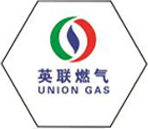
Oct . 11, 2024 15:55
Back to list
Understanding Pressure in Piping Systems for Industrial Applications and Safety Considerations
Pressure Pipe Systems An Overview
Pressure pipes are essential components in various industries, primarily used for transporting fluids under pressure. These pipes are engineered to withstand high internal pressures while maintaining structural integrity, making them vital in water supply systems, sewage treatment plants, chemical processing facilities, and even in oil and gas transportation.
Types of Pressure Pipes
Pressure pipes come in various materials, including metal, plastic, and concrete, each designed for specific applications. The most commonly used materials are
1. PVC (Polyvinyl Chloride) Known for its lightweight and corrosion-resistant properties, PVC pipes are frequently used in water supply and irrigation systems. They are easy to install and are economical, making them a popular choice for residential and commercial applications.
2. HDPE (High-Density Polyethylene) HDPE pipes are highly durable and resistant to impact and chemical corrosion. Their flexibility makes them suitable for various applications, including underground and above-ground systems. They are particularly favored in environments where soil movement is a concern.
3. Steel Steel pressure pipes, including carbon steel and stainless steel, are commonly used in industries that require high strength and durability. They are often employed in oil and gas transportation systems, where high pressure is a norm. While they provide excellent strength, steel pipes can be susceptible to corrosion, necessitating protective coatings or the use of stainless steel.
4. Ductile Iron Ductile iron pipes are known for their high tensile strength and ductility. They are typically used in water distribution systems and are ideal for applications where high pressure and heavy loads are expected.
Design and Standards
The design of pressure pipe systems must adhere to specific standards and regulations to ensure safety and reliability. Various factors need to be considered during the design process, including
- Pressure Rating Pressure pipes are categorized based on their pressure ratings, which indicate the maximum pressure they can safely handle. This rating is critical in determining the appropriate pipe for a specific application.
- Diameter and Wall Thickness The diameter and wall thickness of the pipe are essential in ensuring that it can carry the required flow of fluid at the intended pressure. Design standards such as ANSI/ASME B36.10 and ISO 4422 provide guidelines for determining the appropriate sizes.
- Joint Design The method by which pipes are joined can significantly impact the overall integrity of the system. Common joining methods include welding for metal pipes and solvent cementing for plastic pipes.
pressure pipe

Installation Considerations
Proper installation of pressure pipes is crucial to their effectiveness and longevity. Some key considerations during installation include
- Trenching and Bedding The trench in which the pipes are laid must be designed to prevent damage during installation and operation. Proper bedding material is essential to support the pipe and reduce the risk of settlement.
- Alignment and Support Pipes must be aligned correctly to minimize stress, and the use of supports can help maintain proper elevation and reduce sagging.
- Testing and Inspection Before a pressure pipe system becomes operational, it should undergo pressure testing to ensure there are no leaks and that it can withstand the required operational pressure. Regular inspections after installation help maintain the integrity of the system over time.
Maintenance and Longevity
Regular maintenance of pressure pipe systems is vital to ensure their longevity. This includes
- Leak Detection Utilizing advanced technologies for leak detection can prevent costly repairs and reduce water loss.
- Corrosion Control Implementing protective measures for metal pipes, such as cathodic protection or barrier coatings, can significantly extend their lifespan.
- Condition Assessment Periodic assessments using techniques like ultrasound or visual inspection help identify potential issues before they escalate into serious problems.
Conclusion
Pressure pipe systems play a crucial role in various sectors, allowing for the safe and efficient transportation of fluids. Understanding the types of pressure pipes, design considerations, installation best practices, and maintenance requirements is essential for engineers and operators in ensuring these systems function effectively and reliably over time. As industries continue to evolve, the demand for innovative materials and technologies in pressure pipe systems will undoubtedly grow, enhancing the efficiency and sustainability of fluid transport worldwide.
Next:
Latest news
-
Safety Valve Spring-Loaded Design Overpressure ProtectionNewsJul.25,2025
-
Precision Voltage Regulator AC5 Accuracy Grade PerformanceNewsJul.25,2025
-
Natural Gas Pressure Regulating Skid Industrial Pipeline ApplicationsNewsJul.25,2025
-
Natural Gas Filter Stainless Steel Mesh Element DesignNewsJul.25,2025
-
Gas Pressure Regulator Valve Direct-Acting Spring-Loaded DesignNewsJul.25,2025
-
Decompression Equipment Multi-Stage Heat Exchange System DesignNewsJul.25,2025

